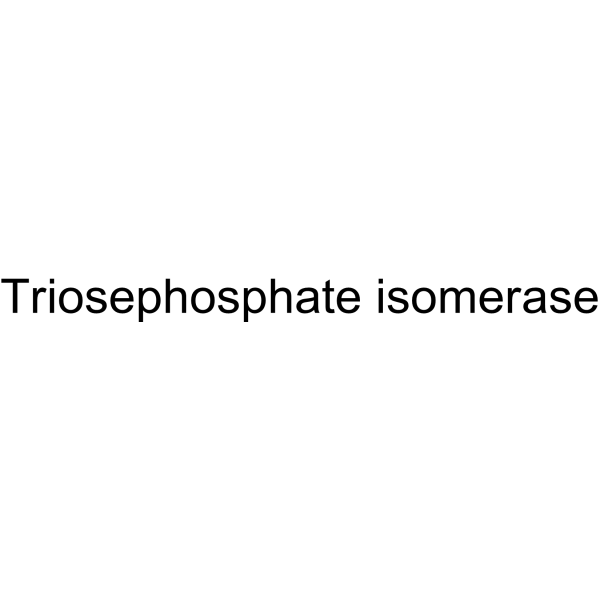Triosephosphate isomerase

Triosephosphate isomerase structure
|
Common Name | Triosephosphate isomerase | ||
|---|---|---|---|---|
| CAS Number | 9023-78-3 | Molecular Weight | N/A | |
| Density | N/A | Boiling Point | N/A | |
| Molecular Formula | N/A | Melting Point | N/A | |
| MSDS | USA | Flash Point | N/A | |
Use of Triosephosphate isomeraseTriosephosphate isomerase (TPI) is a glycolytic enzyme. Triosephosphate isomerase fast interconverts dihydroxyacetone phosphate and D: -glyceraldehyde-3-phosphate, its catalytic site is at the dimer interface[1]. |
| Name | D-GLYCERALDEHYDE-3-PHOSPHATE KETOL-ISOMERASE |
|---|---|
| Synonym | More Synonyms |
| Description | Triosephosphate isomerase (TPI) is a glycolytic enzyme. Triosephosphate isomerase fast interconverts dihydroxyacetone phosphate and D: -glyceraldehyde-3-phosphate, its catalytic site is at the dimer interface[1]. |
|---|---|
| Related Catalog | |
| References |
| Storage condition | 2-8°C |
|---|
| Personal Protective Equipment | Eyeshields;Gloves;type N95 (US);type P1 (EN143) respirator filter |
|---|---|
| Risk Phrases | 21/22-36/37/38 |
| Safety Phrases | 26-36/37 |
| RIDADR | NONH for all modes of transport |
| WGK Germany | 3 |
|
Triosephosphate isomerase I170V alters catalytic site, enhances stability and induces pathology in a Drosophila model of TPI deficiency.
Biochim. Biophys. Acta 1852(1) , 61-9, (2015) Triosephosphate isomerase (TPI) is a glycolytic enzyme which homodimerizes for full catalytic activity. Mutations of the TPI gene elicit a disease known as TPI Deficiency, a glycolytic enzymopathy not... |
|
|
Quantitative phosphoproteomic analysis of T cell receptor signaling reveals system-wide modulation of protein-protein interactions.
Sci. Signal. 2 , ra46, (2009) Protein phosphorylation events during T cell receptor (TCR) signaling control the formation of complexes among proteins proximal to the TCR, the activation of kinase cascades, and the activation of tr... |
|
|
Initial characterization of the human central proteome.
BMC Syst. Biol. 5 , 17, (2011) On the basis of large proteomics datasets measured from seven human cell lines we consider their intersection as an approximation of the human central proteome, which is the set of proteins ubiquitous... |
| EINECS 232-774-2 |